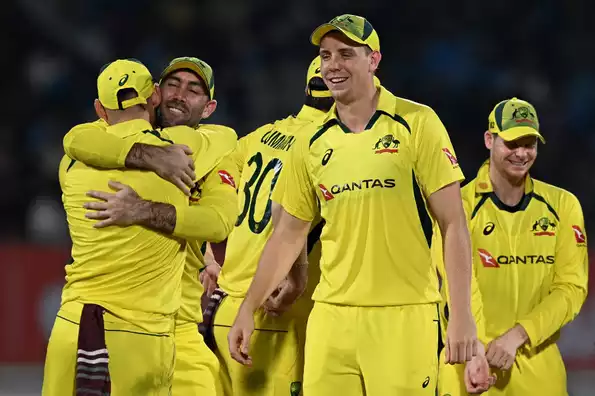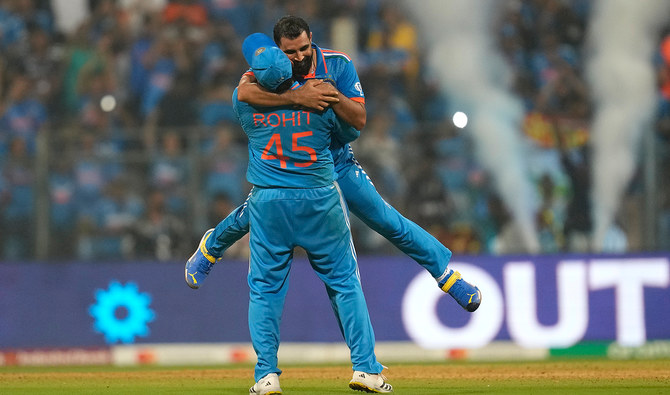Australia’s World Cup preparations end with victory over India

Maxwell bagged four wickets
Australia’s bowlers, led by Glenn Maxwell, produced a disciplined performance to secure a 66-run win over India in the final ODI at Rajkot on Wednesday. The victory was a much-needed morale-booster for the visitors, who had lost the first two matches of the series.
This was Australia’s highest ODI total at the Saurashtra Cricket Stadium, and their bowlers ensured that it was enough to seal the win. Maxwell took four wickets for 40 runs, and was ably supported by Jasprit Bumrah and Kuldeep Yadav.
India were set a challenging target of 353 in the final ODI, and they started their chase with an unconventional move, opening the batting with Washington Sundar and Rohit Sharma. Shubman Gill and Ishan Kishan were both unavailable, so the team management had to try a new opening pair, but the move didn’t pay off.
Sundar struggled to score runs, and he was eventually dismissed by Glenn Maxwell after the first Powerplay. Rohit, on the other hand, looked in sublime touch, and he punished anything short from the Australian bowlers. However, the opening stand didn’t go past fifty, as Sundar’s dismissal left India one wicket down for 50.
Like the first innings, the second innings pitch was slow and difficult to score on. Rohit and Virat Kohli stitched together a partnership to keep India in the game, but neither player was able to dominate the Australian bowlers. The visitors used the surface cleverly, mixing up their pace and lengths to stifle the scoring rate.
As long as Rohit and Kohli were together, India had a chance of winning the match. However, Maxwell turned the tide with two sensational pieces of cricket.
Glenn Maxwell produced a stunning one-handed return catch to dismiss Rohit Sharma, who was batting beautifully at the time. It was an almost instinctive reaction, but Maxwell held on to the catch, showing as much surprise as anyone else. If the Rohit wicket was a touch lucky, the Kohli wicket was the result of brilliant defensive bowling.
Maxwell stifled Kohli by keeping the ball consistently in the right area. Kohli tried to move his feet multiple times, but Maxwell adjusted his length accordingly. Eventually, Kohli mistimed a pull shot and Smith took a good catch.
Australia’s twin strikes of Rohit Sharma and Virat Kohli gave them the momentum they needed, and India were never able to recover. Shreyas Iyer and KL Rahul got starts, but the run rate kept climbing, and Iyer was eventually dismissed by Glenn Maxwell’s clever arm ball. With a long tail, India couldn’t afford to leave too much for the end, but that’s exactly what happened. Tanveer Sangha bowled impressively alongside Maxwell, and the other Australian bowlers all played their part.
Earlier, Australia had posted their best batting performance of the series, thanks to fifties from their top four. Mitchell Marsh’s 96 was the cornerstone of the innings, which was set up by David Warner’s early blitz. Warner was the aggressor in his stand with Marsh, and set the tone for the innings. Although he fell in the first Powerplay, he had laid the platform for Marsh and the others to do their bit. Steve Smith and Marnus Labuschagne also produced fifties, with Labuschagne’s knock particularly important as it came during a mini-collapse. Smith looked in prime touch, as did Marsh, and both batsmen made full use of the good early batting conditions.
Australia looked set for a score of over 375, if not 400, at one stage, reaching 215/1. However, the pitch slowed down and became more difficult to bat on, and the Indian bowlers managed to pull things back in the middle overs. Jasprit Bumrah bowled a brilliant second spell, but he still ended up with his joint most expensive figures in ODI cricket. India briefly had hopes of restricting Australia to 320-330, but Marnus Labuschagne anchored the innings to a very strong score.





